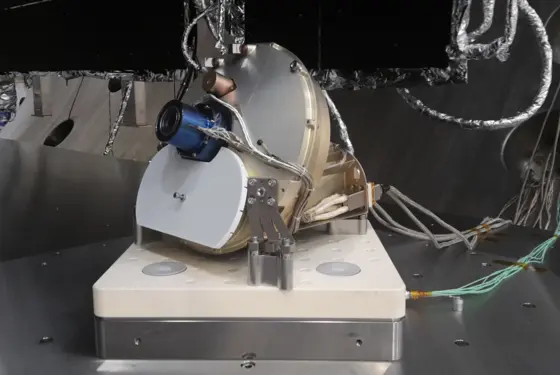Reduced noise thresholds for measurements of micro-vibrations
The IEPE (Integrated Electronics Piezoelectric) triaxial accelerometer 8763B is the most common Kistler sensor used for these measurements and permits vibration monitoring in three mutually perpendicular axes. The measuring threshold determines the smallest possible level of vibrations that can be reliably picked up by the sensor. In 2021, Kistler already improved the noise threshold for the 50-g range. More efficient testing procedures and large investments into Kistler’s facilities have now led to further improvements. The 8763B now features a significantly lower noise threshold for all its ranges: a 58-percent lower noise threshold for its 100-g range, 37 percent for the 250-g range, 52 percent for the 500-g range, 54 percent for the 1000-g range and 51 percent for the sensor’s highest range of 2000 g. With these improvements sensor 8763B becomes even more suitable for common applications, like modal analysis, frequency response measurement and e-motor testing.
Improved availability of triaxial accelerometer
The improved procedures and operations at Kistler have also resulted in shorter lead times and reduced delivery times for the 8763B series on low- to mid-sized orders. With this new process, throughput time has been reduced significantly under optimal conditions. This in turn, also allows for increased safety stock levels to be maintained. At the same time, the availability of subcomponents has improved as well.
The 8763B sensors provide a wide frequency response in each orthogonal axis, making it well-suited for dynamic vibration measurements, especially on lightweight structures. Other features include the sensors’ lightweight hermetic titanium housing and high immunity to base strain thanks to shear element technology. An integral silicone cable variant is available for underwater vibration testing at up to 10 bars. Sensors of the 8763B family can be installed on test objects by either adhesive mounting or flexible studs thanks to three 5-40 threaded holes, making it possible to fully utilize each mounting side of the cube design, ensuring reliable mounting for the calibration of each axis.








![Lower noise threshold for all measuring ranges and reduced lead time for accelerometer 8763B [object Object]](https://kistler.cdn.celum.cloud/SAPCommerce_Document_Preview/999-217e.jpg)